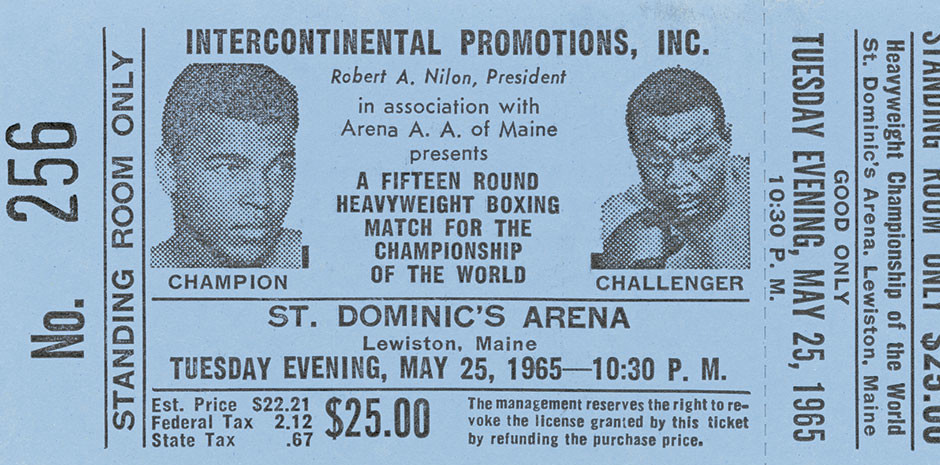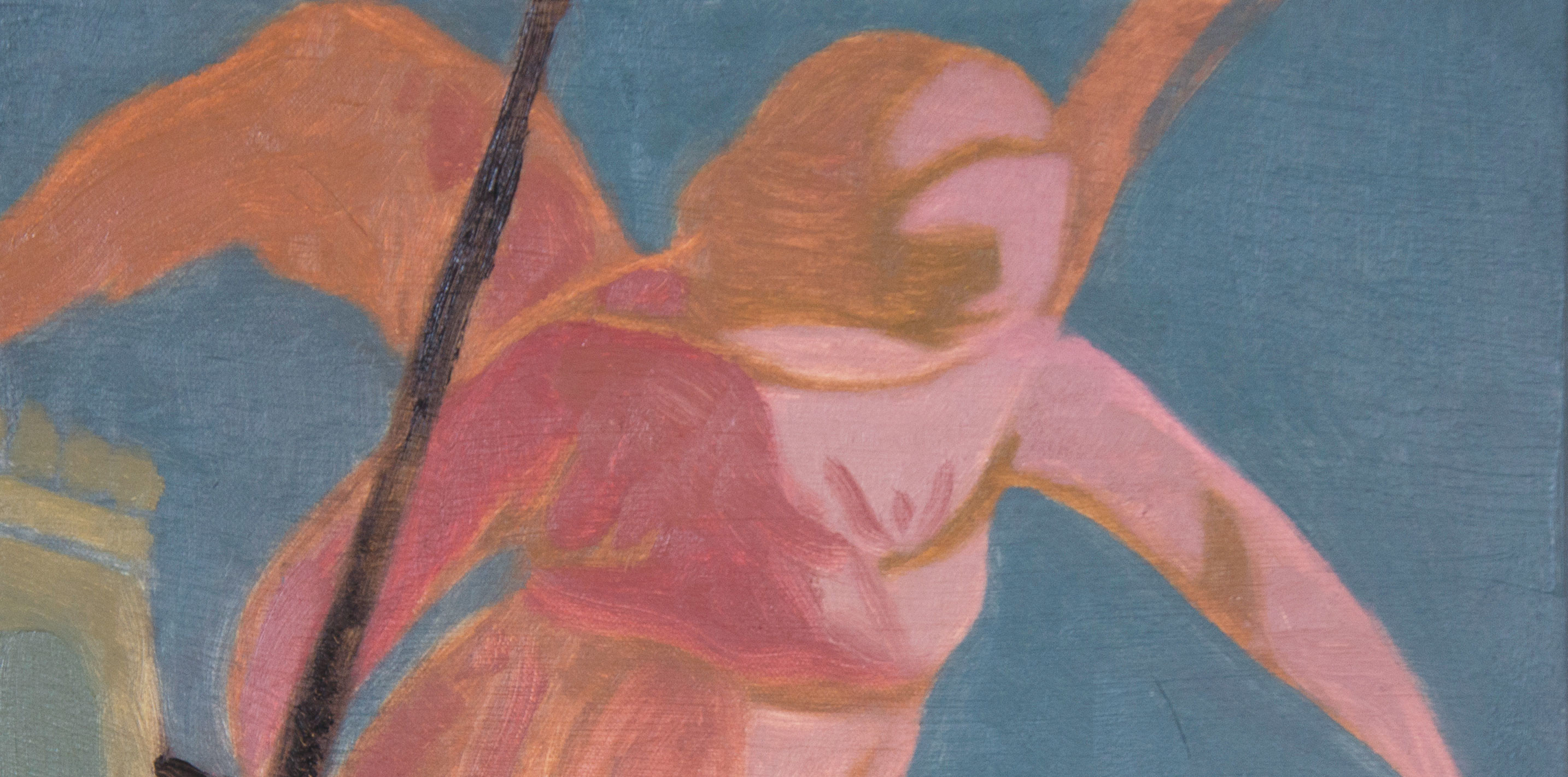For all his love of Dante, I don’t think Nick Tosches was much of a Boccaccio man. Still, he might have admired the saga that begins The Decameron. It is the story of one Ser Cepparello da Prato, un pessimo uomo, a dandy gentleman who wets his beak in every vice—blasphemy, forgery, booze, sex, crooked dice, marked cards, you name it. But nothing gives him a bigger kick than stirring up bad feelings, for, according to our storyteller, “the greater the evils he saw . . . the greater his happiness.” Dispatched to Burgundy to collect on the Boss’s loans,
- print • Summer 2020
- print • Summer 2020
A FEW NIGHTS AGO, I WAS VISITED BY AN EMAIL. Back before the world gasped, my brother, the doctor, hardly ever wrote me anything beyond a “dinner Friday y/n,” and yet here he was, in the breathless thick of it, attaching a file of 7,241 words. I’d thought that he was far out in the boroughs intubating the sick or putting them through dialysis—and he was—but somehow he’d also found the time and adrenalized energy to put more language down on the screen than I, the ostensible writer, had managed to eke out in weeks, even months. The instructions that
- excerpt • April 30, 2020
What’s the opposite of nostalgia? I ask that question because the stories in this book take me back to a time & place I thought I’d forgotten—but I really wouldn’t want to go back there.
- excerpt • April 28, 2020
The cultural critic Susan Sontag’s classic Illness as Metaphor emerged from her rage at seeing, after her own cancer diagnosis, “how much the very reputation of this illness added to the suffering of those who have it.” In 1978, Sontag contended with cancer’s reputation as scourge, invader, predator, demonic pregnancy, demonic enemy, barbarian within. Cancer’s roots were then imagined, at least in part, as psychological, resulting from repressed emotion. These metaphoric conceptions of cancer saddled its sufferers with shame and prevented many from seeking proper treatment or even knowing their diagnosis. A decade later, in AIDS and Its Metaphors, Sontag
- review • April 16, 2020
Social distancing may have brought us farther from our friends, but we have never been in more constant contact with our bookshelves and word processors. Many of us are dusting off unread classics, or attempting to write the book we’ve always meant to. Though they aren’t physically open, universities, literary institutions, and bookstores are providing online classes and community events on literature and composition. Grab your Milton and open “Novel.doc”—the experts are (virtually) in.
- review • April 9, 2020
Reading at home can’t replace the sense of community and connection offered at your local bookstore, but virtual book clubs, talks, and classes may help fill the void. Independent booksellers and publishers across the US are moving their scheduled spring programming online and some are launching entirely new web series for your quarantine-viewing pleasure. Attending these won’t be the same as meeting in person, but it’ll come close.
- print • Apr/May 2020
Benny and Josh Safdie, Uncut Gems, 2019. Howard Ratner (Adam Sandler). A24 We were called hip-pocketers, because we lived from one deal to the next: Your business could fit in the wallet in your pocket. You bought a used Rolex at a pawnshop for a thousand bucks from the kid who’s just paid five hundred […]
- print • Apr/May 2020
Do you find it as obvious as I do that Don DeLillo richly deserves to receive the Nobel Prize in Literature? And right away, as in this year?
- print • Apr/May 2020
Deacon King Kong (Riverhead, $28) is a warm-blooded free-for-all, a donnybrook, a rumpus, what in baseball lingo would be called a “rhubarb.” And, as it happens, baseball, a steadfast metaphor for democratic ideals, plays a marginal role in James McBride’s bountiful and compassionate comedy of errors, bloopers, and near misses. The generosity of detail and range of emotional life infused in McBride’s vision of working-class Brooklyn at the hinge of the 1960s and 1970s are more characteristic of a nineteenth-century novel than of its counterparts in the twenty-first. And McBride is so adroit at manipulating his characters through myriad complications
- print • Apr/May 2020
Davide Sorrenti excelled at the part of photography that takes place long before a camera comes into play. He got people to relax, to be vulnerable and unselfconscious. (To be naked, too, sometimes.) Small and young and rapscallionish, he slid into complicated situations with ease, arrogance, and poise. He was the sort of photographer people in front of the lens wanted to please, because in his big-ego, small-package cocksureness, he seemed privy to some idea of beauty or freedom that maybe, if you let him snap the picture, you might access too.
- print • Apr/May 2020
Please don’t bury me Down in that cold, cold ground No, I’d rather have ’em cut me up And pass me all around —John Prine, “Please Don’t Bury Me” Fearful indeed the suspicion—but more fearful the doom! It may be asserted, without hesitation, that no event is so terribly well adapted to inspire the supremeness of bodily and of mental distress, as is burial before death. —Edgar Allan Poe, “The Premature Burial” There could be unexpected chiming or clanging. —Lorrie Moore, “Author’s Note” to Collected Stories IF THE STRANGEST THING ABOUT LORRIE MOORE’S COLLECTED STORIES is that it didn’t exist
- print • Apr/May 2020
SET THE NIGHT ON FIRE, written by Mike Davis in collaboration with historian Jon Wiener, is a kind of sequel to City of Quartz, the cultural analysis of Los Angeles Davis published in 1990. In the beginning of CoQ, Davis described the focus of that book as “the history of culture produced about Los Angeles.” And that is true for roughly two hundred pages of CoQ, as Davis reviews the work of California historians like Carey McWilliams (he approves) and “the European reconceptualization of the United States” carried out by Los Angeles transplants like Theodor Adorno (he’s torn). Davis also
- print • Apr/May 2020
WHENEVER I SEE A COPY OF A ROBERT STONE NOVEL in a used-book store, I buy it, pretty much to introduce him to others, to press his work upon others. I recently acquired a copy of A Flag for Sunrise, one of his masterworks—1981 first edition. Out of print. Nine dollars. Between its pages, a folded note. Black ink. Neat handwriting. Life is hard. We’re trying to prepare you for that. Make mistakes . . . fine . . . good. But make them because you don’t know. Learn from them. Do not make them b/c your friends are making
- print • Apr/May 2020
The last particule of the once-sprawling Chelsea Flea Market closed down on December 29, 2019. That remnant occupied a parking lot on 25th Street, between Broadway and Sixth Avenue, but earlier the market, which opened in 1976, had in addition comprised three lots along Sixth Avenue, as well as a garage on 25th Street, the principal setting and primary subject of this beguiling memoir. Flea markets have been in serious decline for years; in many parts of the country a “flea market” is where you go to buy batteries, aftershave, and car parts. The recent, possibly terminal phase has everything
- print • Apr/May 2020
Katie Roiphe is someone who, by her own account, writes prose as if heading into combat: She describes her preferred authorial voice as “a vehicle, a tank.” But a while back she began to feel something lacking. “My usual ways of being in the world were no longer working,” she writes at the beginning of her new memoir, The Power Notebooks. “My theories and interpretations were wrong or inadequate.” She was used to building arguments and taking stands, but she wanted to try something different—something looser, more fragmentary, more vulnerable. She began keeping a notebook where she collected thoughts on
- print • Apr/May 2020
Throughout 2015 and 2016, the US Army set off multiple clouds of deadly chlorine gas, not in some secret location in the Middle East or Afghanistan, but about an hour’s drive south of Salt Lake City. The Dugway Proving Ground, established during World War II, occupies a swath of desert larger than Rhode Island. During the war, the military built villages that resembled German and Japanese towns in order to try out weapons, including poison gas. This activity continues to the present day. In Proving Ground, David Maisel’s aerial and ground-level photos of Dugway—he reports that gaining access to the
- print • Apr/May 2020
The most popular honorary American of all time is unquestionably Jesus of Nazareth. But Shakespeare scholar James Shapiro’s latest book makes a lively case for Will as the man from Galilee’s perennial runner-up among unwitting citizens of the USA. Shakespeare in a Divided America: What His Plays Tell Us About Our Past and Future blends Shapiro’s usual zest for unpacking time-capsule moments (e.g., The Year of Lear) with a newfound relish for Trump-era topicality. True, you may be tempted to groan at his fatuous subtitle—our future, really? Say it ain’t so, Weird Sisters. But he’s contrived an ingeniously structured game
- print • Apr/May 2020
In 1971, for the month of July, powerhouse poet Bernadette Mayer documented her life by shooting a roll of 35 mm film every day and writing down as many experiences, ideas, observations, feelings, and sights as she could. From those materials, she created Memory, a fabled work of installation art that plunged viewers headlong into the fizzing slipstream of her consciousness. Disorienting and clarifying in equal measure, Memory uncovers the space between living and recorded life. If the latter is imperative to apprehending the tumult of human experience, it nonetheless falls very short of capturing its full measure. “It’s astonishing
- print • Apr/May 2020
A man is what he eats. So wrote the nineteenth-century German philosopher Ludwig Feuerbach, and such is the premise underlying Ben Katchor’s monumental illustrated book The Dairy Restaurant.
- print • Apr/May 2020
Where most autotheory centers the life of the mind, Harry Dodge’s new memoir goes a step further, taking the mind as its matter and, to some extent, its form. The book is a brain! A peripheral brain that wonders about machine intelligence, consciousness, and itself. My Meteorite: Or, Without the Random There Can Be No New Thing sifts through a relentless stream of inputs, nestling experiences and ideas to discover what might magnetize what. Roaring with thinking, the text might like to rise up and reassemble itself into animate form.



















